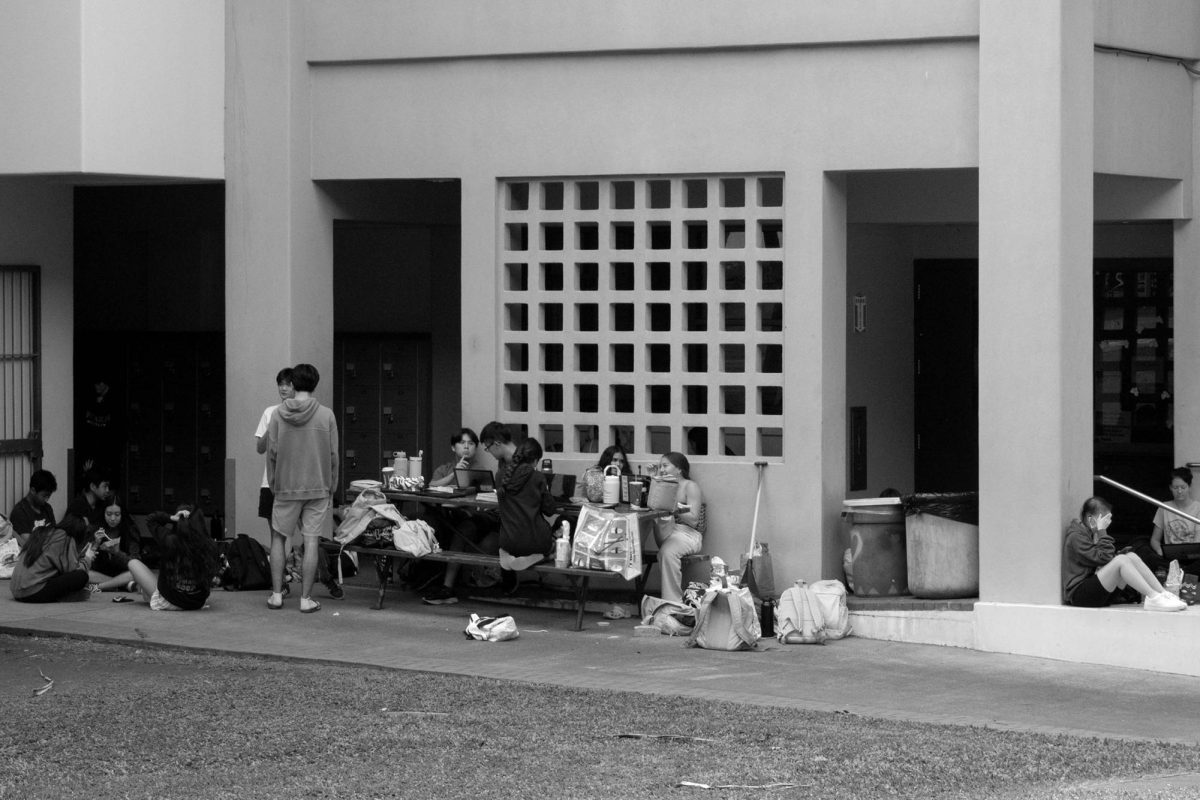During lunch breaks, the Quad becomes filled with a robust environment of students laughing, talking, and eating. Different friend groups have unofficial yet very prominent seating arrangements within the Academy Quad. As such, it has become customary for specific areas to “belong” to certain groups. Over time, this arbitrary seating system has played a large role in fostering Academy culture.
This seating arrangement culture is not a new idea, though–it has been prevalent for countless years in the Academy. Before COVID-19 struck, Academy friend groups would sit in their preferred buildings. Eventually, students grew a habit of sitting in the same area, and the cycle of socially designated seating kept repeating year after year. Typically, when you pick your lunch area as a freshman, that area becomes your “home” for the rest of your tenure in the Academy.
It is impossible to ignore the seating culture all around campus, which some believe to be harmless and even inevitable. Meanwhile, others argue seating culture has negative social effects.
“We’ve been eating at our tree for three years…I like where we sit, but I wouldn’t say I like seating culture at Punahou because it is very cliquey,” stated Alicia Pearson ’26. “It solidifies our pre-existing cliques—like we’re geographically separated.”
Like Pearson, many students are pleased with their current seating arrangements. Despite this, they are not exactly content with the clique system the culture establishes, fearing it contributes to separations within the student body.
Pearson continued to highlight how her group’s particular seating area was long-established. However, with ongoing construction and continuous seating changes, this is no longer the case for all friend groups.
“We’ve been sitting in the same spot since freshman year, but since there are new freshmen moving [into] that area, we are starting to have [to] share it,” stated Jovie Okamoto ’25.
Okamoto voiced what many groups experience: adaptation in a time of shifting seating culture. Although it is customary for underclassmen to slowly assimilate into pre-established seating areas, construction projects are making this transition happen at an unprecedented rate.
Last summer, with the onset of Mary Kawena Pukui Learning Commons construction, walls and barriers were installed. As a result, various areas near Cooke Library and Alexander Hall were blocked off. For instance, the Beach–the area with green tables and benches between Cooke Library and the pool–is no longer accessible. A plethora of other recreational and seating spaces were barred off as well.
When school started in August, students had no idea where to eat lunch and most had to relocate. To combat this, large tents were raised in the Quad and near Griffiths Hall. Two larger tests were erected in the middle of the Quad, each covering around eight picnic tables with benches attached. The smaller tent near Griffiths could comfortably fit one table. Many students felt compelled to move under these tents, and displaced groups began to abandon their old seating areas.
“A lot of people sit in the tent, and everyone else is kind of scattered,” noted Riya Krishnagopalan ’26.
Soon enough, the tents were established as the best alternative amidst the construction situation. As a result, each tent overflowed with a range of friend groups, establishing their own seating ecosystems while altering the overarching pre-existing one. In turn, limited seating options might have unexpectedly created a slightly less “geographically separated” Quad, contrasting the one Pearson described.
Despite hope for changes in the social aspects of seating culture, it might be a while before any large reforms occur. While the Quad’s social ecosystem may face changes in the near future, seating culture as a whole has not diminished; many groups continue to resort to their preferred seating areas.
Ultimately, a large part of Punahou’s student life relies on these small aspects: where we sit for lunch, hang out on campus, and congregate during break times. Gradual changes may come soon, but for now, seating culture will continue to be a significant part of Punahou’s culture.


Yasmeen Patel • Apr 29, 2025 at 7:35 pm
This article immediately grabbed my attention. Despite most students often being assigned to certain seating arrangements, as you wrote, I wonder why there are no friend groups behind Pauahi or behind Griffith. Or other secluded areas of the same. If those in their seating arrangements (including me) are often not going to change our seats to talk to new people without external influence, we may as well eat in a place that has more nature and fewer people. Nature is calming. And around large or even medium numbers of people, some people would feel anxious.